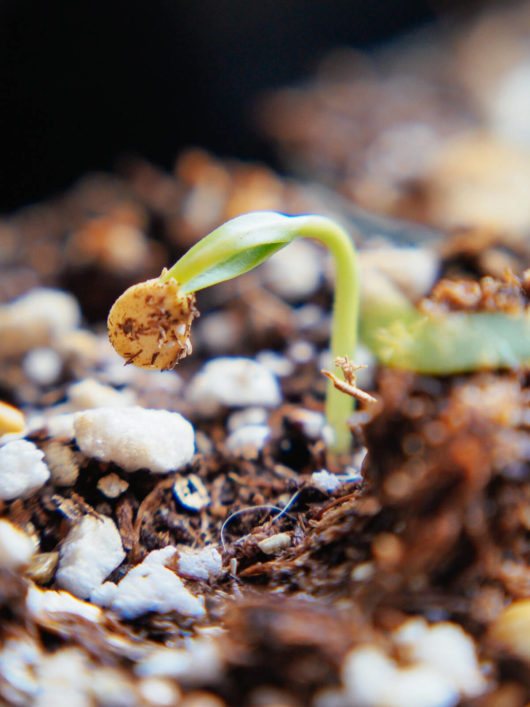
No matter how many times I’ve seen it, the magic of germination still awes me as if it was the first time. I still don’t understand how bushels of juicy tomatoes will come from a single seed smaller than the diameter of a pencil eraser, or how specks of basil seeds will turn into a forest of woody, fragrant herbs that grow over 3 feet tall.
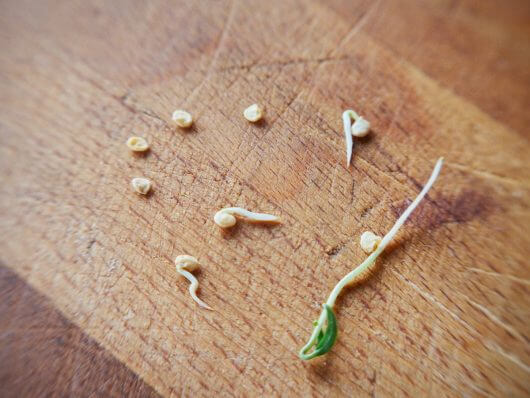
It’s amazing what happens inside a seed before and after it sprouts, and being witness to such a process — something you can only experience by growing from seed — is truly one of the wonders of life. The anatomy of a seed and seedling is something every gardener should know, and learning the science behind it will help you become a better gardener!
Sometimes we simply bring home starter plants from the nursery, which have already been trained and nurtured from birth, and we don’t realize what it took to get them to that point. Then we think how hard it is just to keep those starter plants alive! Try raising them from seed, where it may take a few tries and a few rounds of natural selection before you get the perfect plant.
When you have a seed in front of you, you’re looking at the seed coat, or testa. Seed coats can be soft and thin (like beans) or fleshy and thick (like squash). Think of them as armor for the future plants inside; the seed coats protect against the elements until conditions present themselves in just the right manner for germination to take place.
Seed coats are adapted to their environments, and they function as a barrier to damage or injury, heat or cold, bacteria or fungi, and even stomach acidity (if ingested by animals). With all this bomber protection in place, it’s no wonder we sometimes have trouble getting a seed to sprout! (Soaking your seeds first can help with this, or in the case of tomato seeds, you can ferment them to speed up germination.)
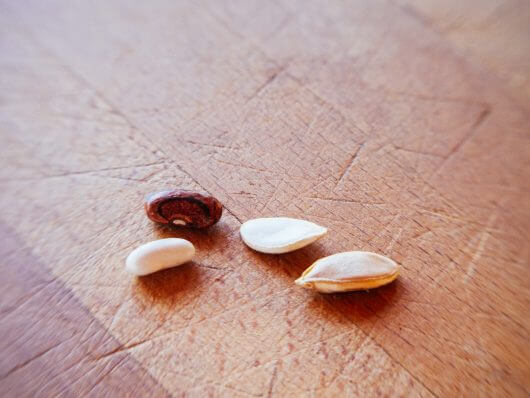
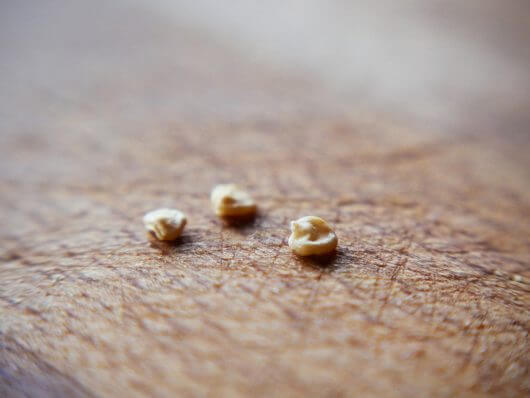
On some seeds, you can see the scar, or hilum, that was left behind when the seed became detached from the mother plant (similar to a human belly button). Hilum are most visible on bean seeds, where the scars as known as eyes — as in black-eyed peas. Others are less noticeable and look like little nubs or dents on the seed coat.
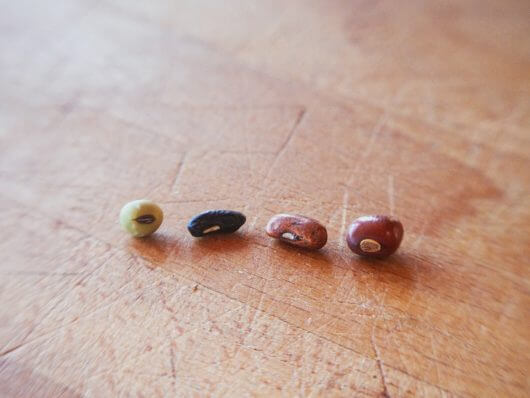
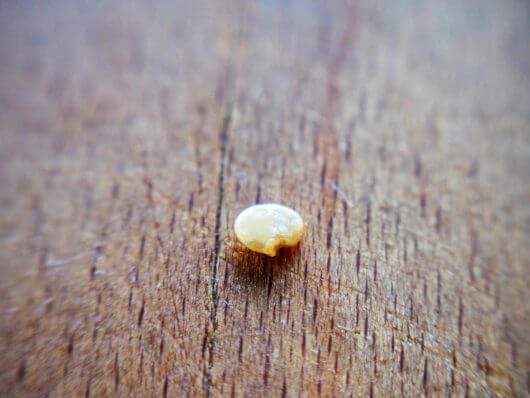
Inside the seed coat is the embryo (baby plant), the endosperm (nutritive tissue), the cotyledons (leaf-like structures), and the beginnings of the root and shoot.
Look closely at this wet seed and you’ll actually see the green cotyledons tucked tightly inside and curled up in fetal position. They are just waiting to be released! (Or at least, that’s what I hope every time I start some seeds.)
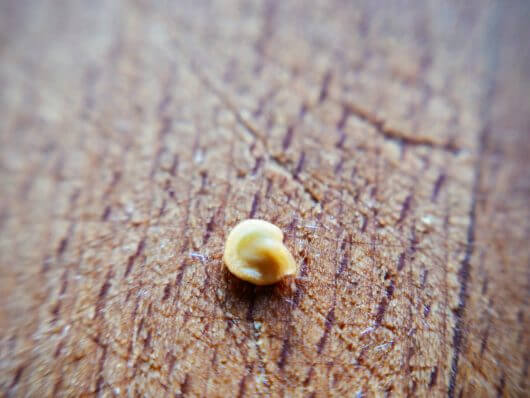
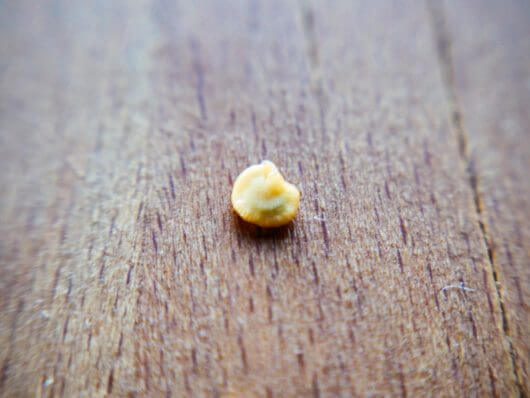
Germination occurs when all the proper variables are in place for that particular variety (oxygen, temperature, light or darkness) and the seed coat absorbs water, causing it to swell and rupture. The first sign of life comes from the radicle, a little white tail that eventually becomes the primary root of the plant.
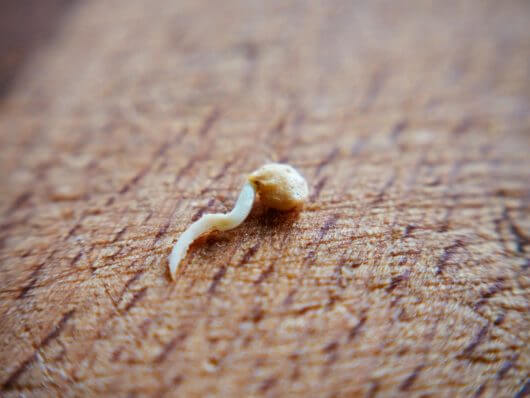
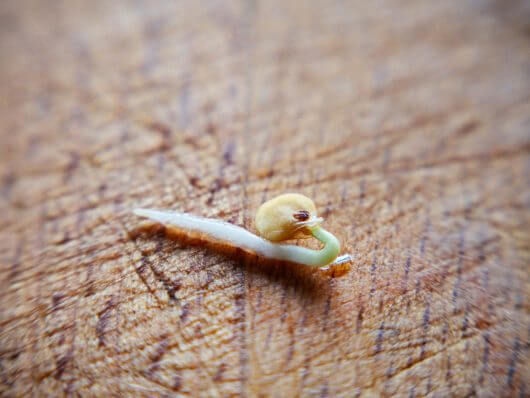
The role of the radicle is to anchor the plant in the ground and start absorbing water. Once it absorbs water, a rudimentary stem emerges and the cotyledons start to unfurl, often taking the seed coat with them as they rise above the soil. (I like to call them seed hats, as sometimes they’re never shed from the cotyledons and end up looking like little berets.)
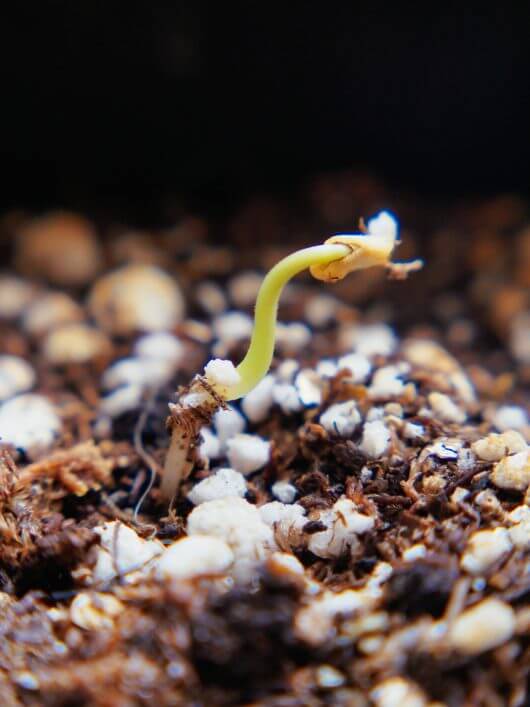
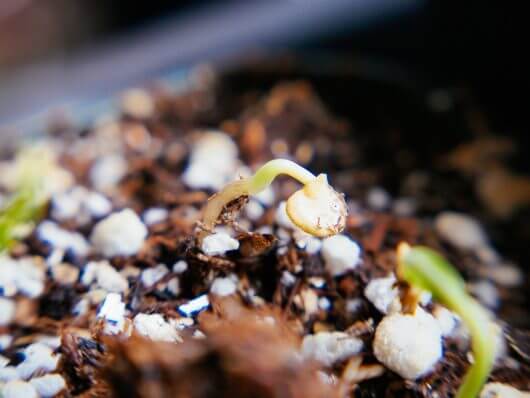
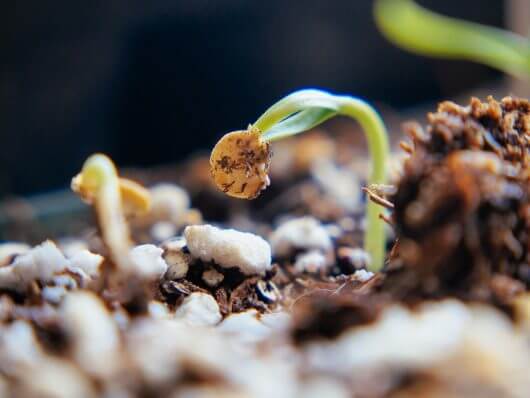
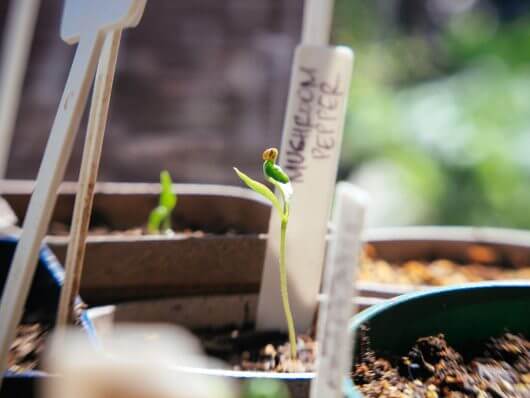
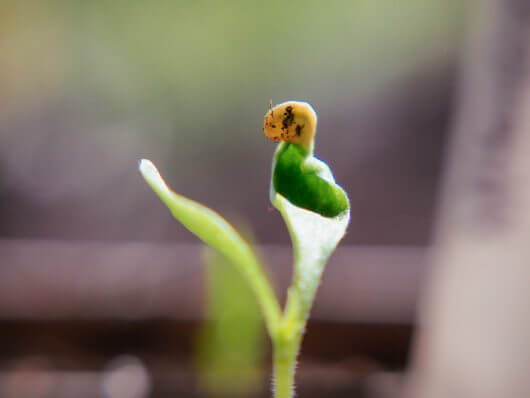
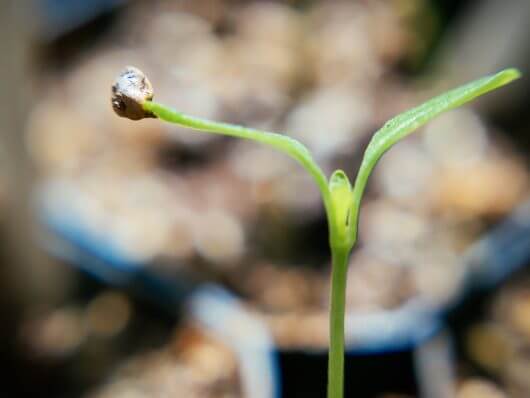
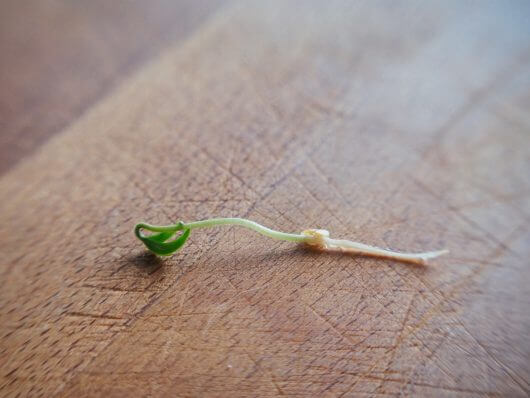
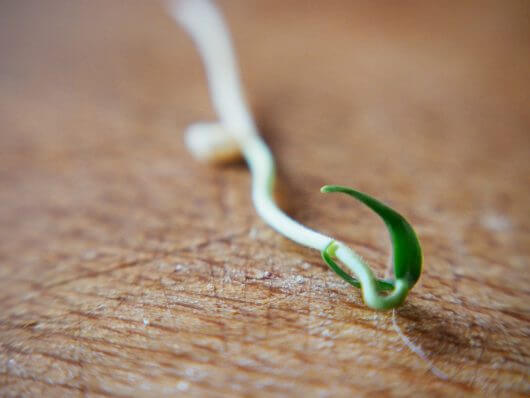
Cotyledons look like leaves but are actually not leaves at all; they absorb all the endosperm and become the temporary stores of the plant’s initial supply of nutrients. Sometimes there is just one (monocotyledon, as is the case with onions) and sometimes there are two (dicotyledons, which are the majority of your vegetables).
Because cotyledons are not the “true leaves” on a plant, most sprouts from the same family look alike at birth, even if they don’t resemble one another as they mature (like these tomatoes and peppers).
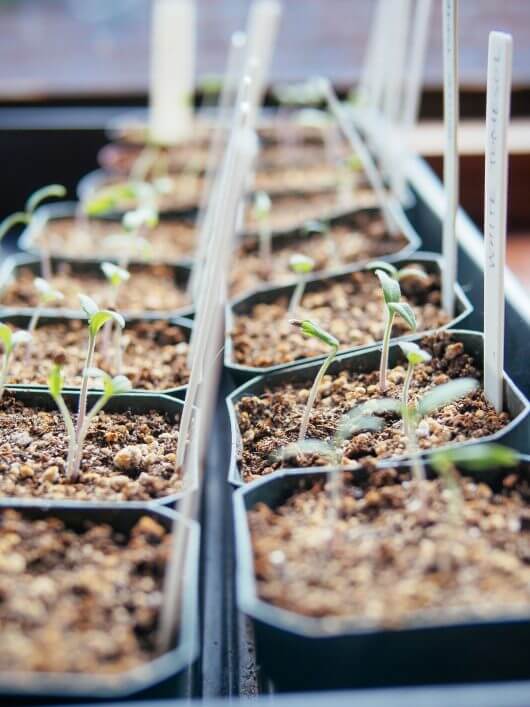
The cotyledons feed the plant until all the nutrients are used up. Once they’re spent, they naturally wither and fall off the stem as new, true leaves form. These second and subsequent sets of leaves are highly distinctive.
You can see how these two varieties of tomatoes have the same cotyledons, but once their true leaves emerge, one seedling has the serrated edges typical of a regular tomato leaf while the other has the smoother lines of a potato leaf.
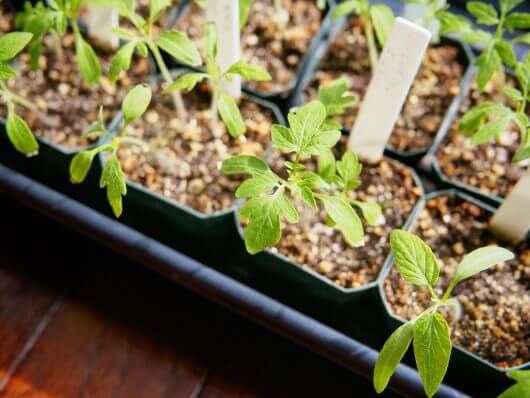
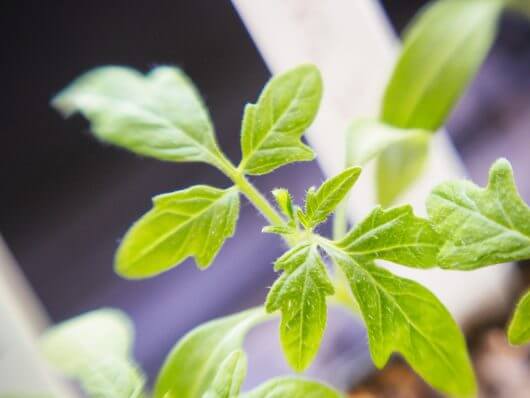
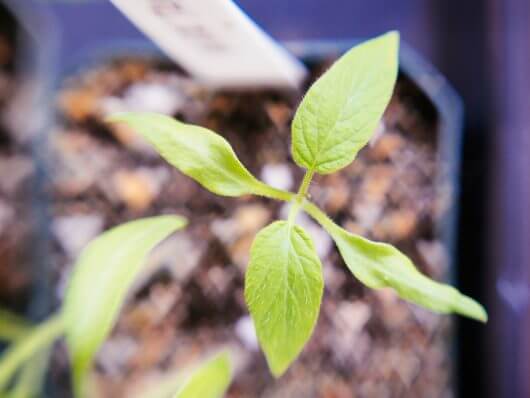
After the first few sets of leaves sprout and the roots dig deeper into the soil, the seedling draws energy from photosynthesis above ground and nutrients found below ground. This is when it enters its vegetative state, and your once-little seedling is on its way to sexual maturity (bud, flower, fruit, and seed). They grow up so fast, don’t they?
To learn more or get started, here’s a simple guide to starting seeds indoors and instructions for starting seeds in coffee filters (otherwise known as the “baggie method”).
This post updated from an article that originally appeared on March 19, 2014.
The post From Seed to Seedling: An Anatomy Lesson appeared first on Garden Betty.
from Garden Betty https://ift.tt/2HfztMZ
No comments:
Post a Comment